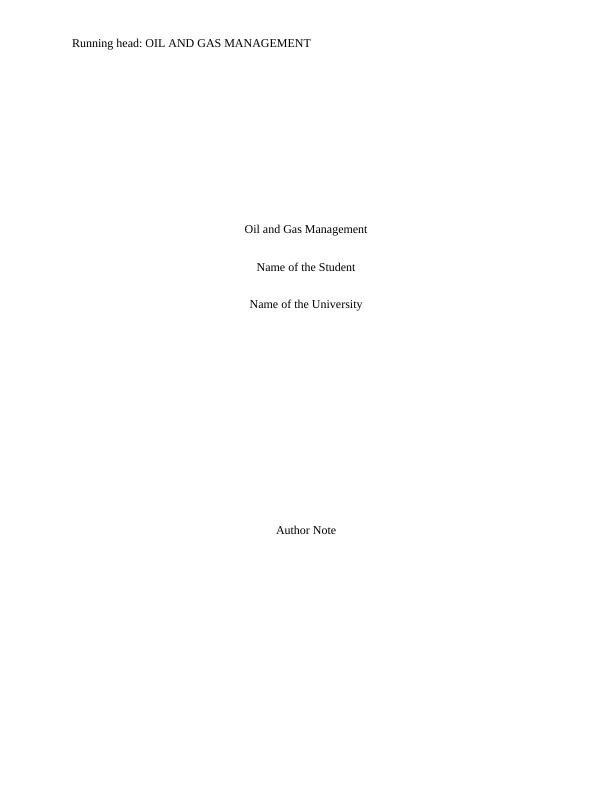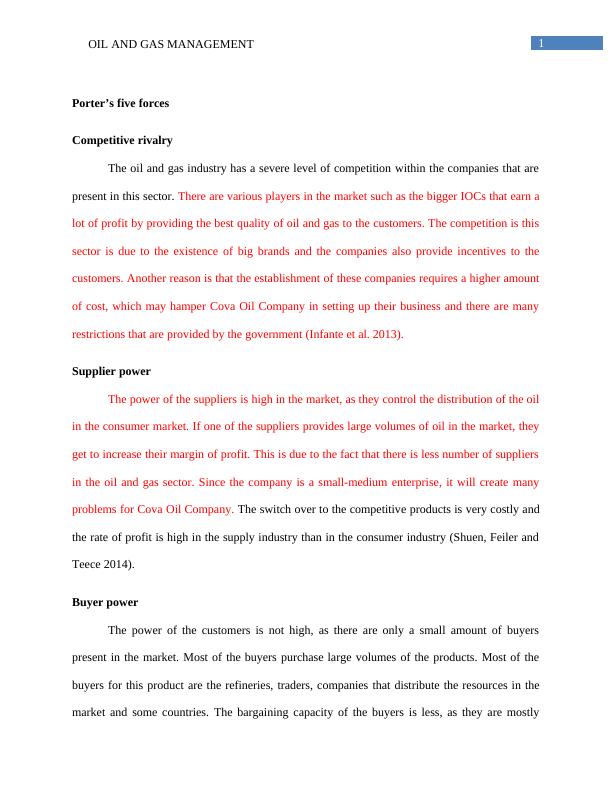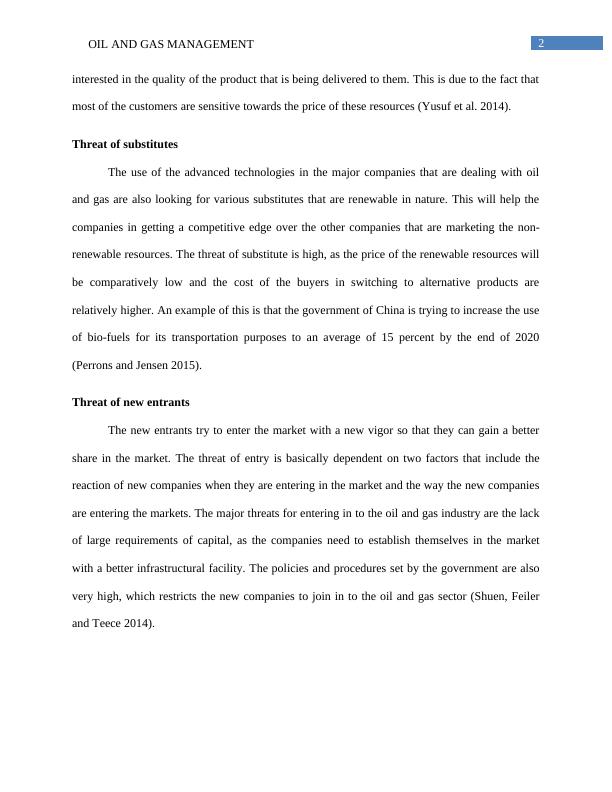Oil and Gas Management- PDF
Added on 2021-04-21
7 Pages1568 Words86 Views
Running head: OIL AND GAS MANAGEMENTOil and Gas ManagementName of the StudentName of the UniversityAuthor Note

1OIL AND GAS MANAGEMENTPorter’s five forcesCompetitive rivalryThe oil and gas industry has a severe level of competition within the companies that arepresent in this sector. There are various players in the market such as the bigger IOCs that earn alot of profit by providing the best quality of oil and gas to the customers. The competition is thissector is due to the existence of big brands and the companies also provide incentives to thecustomers. Another reason is that the establishment of these companies requires a higher amountof cost, which may hamper Cova Oil Company in setting up their business and there are manyrestrictions that are provided by the government (Infante et al. 2013).Supplier powerThe power of the suppliers is high in the market, as they control the distribution of the oilin the consumer market. If one of the suppliers provides large volumes of oil in the market, theyget to increase their margin of profit. This is due to the fact that there is less number of suppliersin the oil and gas sector. Since the company is a small-medium enterprise, it will create manyproblems for Cova Oil Company. The switch over to the competitive products is very costly andthe rate of profit is high in the supply industry than in the consumer industry (Shuen, Feiler andTeece 2014).Buyer powerThe power of the customers is not high, as there are only a small amount of buyerspresent in the market. Most of the buyers purchase large volumes of the products. Most of thebuyers for this product are the refineries, traders, companies that distribute the resources in themarket and some countries. The bargaining capacity of the buyers is less, as they are mostly

2OIL AND GAS MANAGEMENTinterested in the quality of the product that is being delivered to them. This is due to the fact thatmost of the customers are sensitive towards the price of these resources (Yusuf et al. 2014).Threat of substitutesThe use of the advanced technologies in the major companies that are dealing with oiland gas are also looking for various substitutes that are renewable in nature. This will help thecompanies in getting a competitive edge over the other companies that are marketing the non-renewable resources. The threat of substitute is high, as the price of the renewable resources willbe comparatively low and the cost of the buyers in switching to alternative products arerelatively higher. An example of this is that the government of China is trying to increase the useof bio-fuels for its transportation purposes to an average of 15 percent by the end of 2020(Perrons and Jensen 2015). Threat of new entrantsThe new entrants try to enter the market with a new vigor so that they can gain a bettershare in the market. The threat of entry is basically dependent on two factors that include thereaction of new companies when they are entering in the market and the way the new companiesare entering the markets. The major threats for entering in to the oil and gas industry are the lackof large requirements of capital, as the companies need to establish themselves in the marketwith a better infrastructural facility. The policies and procedures set by the government are alsovery high, which restricts the new companies to join in to the oil and gas sector (Shuen, Feilerand Teece 2014).

End of preview
Want to access all the pages? Upload your documents or become a member.
Related Documents
Porter's Five Force Modellg...
|2
|559
|37
Porters Five Forces Model for Fashion Retail Industrylg...
|1
|1068
|528
Strategic Management SM Assignmentlg...
|8
|1309
|65
Business Policy and Strategy-Business Policy -Assignmentlg...
|7
|1187
|66
Porter’s Five Force Analysis - Tescolg...
|12
|776
|53
Porters Five Forces Analysis of the Australian Solar Energy Industrylg...
|4
|724
|368